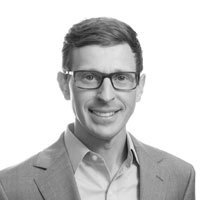Phonak's Audiology Research Centers: Building Bridges between the Clinic and Technology

AudiologyOnline: Tell us about global clinical research at Phonak?

Jason Galster, PhD: Our clinical research teams play an integral role in the development and clinical understanding of Phonak technology. Years before a new technology is available in the clinic, we begin exploratory testing of that technology to understand how patients will benefit. As that technology progresses from concept to implementation in a hearing instrument, we are conducting clinical studies to understand the readiness and ideal options for prescription of the new technology. Our teams also lead clinical trials that are a significant regulatory step required when bringing some hearing technologies to the market.
Our research continues after new technology is launched and introduced to clinics. It’s at this stage that many research collaborations begin with Universities and Clinical partners. The current portfolio of research collaborations spans the globe and is addressing some of today’s most interesting questions in audiology. This would be a great topic to focus on in a future Q&A.
AudiologyOnline: Where are Phonak’s clinical research teams located?
Jason Galster, PhD: Our clinical research organization is truly global. We have Audiology Research Centers in the United States (Chicago), Canada (Toronto), Switzerland (Staefa), and China (Shanghai). The teams at each Center are exceptionally talented and offer deep expertise in different areas of audiology. By leveraging the talents at each location, we ensure that there’s always a subject matter expert available to consult on new clinical study designs.
AudiologyOnline: Wow, these clinical studies must require a lot of research participants! Is recruiting a challenge?
Jason Galster, PhD: Our research participants really enjoy participating in the studies. Almost everyone who participates returns for future studies. Across the locations in Chicago, Toronto, Staefa, and Shanghai we have more than 1865 research participants with an average age of 73 years. We find that different regions of the world may have more or less access to research participants of different demographic and audiologic profiles. For instance, the Audiology Research Centers located in Chicago and Toronto have proximity to large cities, which facilitates recruitment of participants with mild-to-moderately severe hearing losses. However, the audiometric profiles available to our research center in Shanghai offer greater access to participants with severe and profound hearing losses, which means that clinical studies asking questions in the severe-to-profound hearing loss population are often conducted in that region.
AudiologyOnline: Are there other benefits to this global network of Audiology Research Centers?
Jason Galster, PhD: Yes! There is the clear benefit of working on hearing research with populations who speak different languages. It’s routine for us to collect clinical data on outcomes in English, German, and Mandarin Chinese. We also benefit from working in regions with very different acoustic environments. For instance, participants living near large cities may spend more time in noisy environments. In contrast, those in comparatively rural environments often travel further for social activities or may experience less noise during daily activities. We see the impact of these observations in audiologic outcome measures and objectively in the hearing instrument datalogging. Specific to subjectively reported outcome measures, there have been clear instances in which cultural attitudes toward hearing instruments and hearing loss affect questionnaire responses. When developing technology used by people with hearing loss around the world, information like this is extremely helpful.
AudiologyOnline: Can you share examples of recent work?
Jason Galster, PhD: Yes, our latest significant study can be found here “Improving Speech Understanding and Listening Effort for Complex Communication Environments with a Novel Noise Reduction System”.
The first of these documents outcomes with the recently released Sphere Infinio hearing aids. The outcomes showed that Spheric Speech Clarity, an AI-based system for denoising, significantly improved speech understanding in noise. Interestingly the benefits of Spheric Speech Clarity extended to sounds originating from the sides and behind the listener, overcoming some traditional limitations of directional microphones.
The second article, ”Adaptive Phonak Digital (APD) 3.0 is the preferred first fit compared to a key competitor device”, summarizes results of another recent study that investigated the subjective perception of sound quality and spontaneous listening acceptance with the Infinio hearing aids. The findings of this work showed that 12 out of 15 participants, who were all first-time hearing aid wearers, rated the first fit sound quality as being good or excellent.
These are only a small sample from our publications in 2024. A full list of publications is maintained at Phonak.com/Evidence. These resources provide insight to the clinical benefits of Phonak technology and helpful guidance on the prescription of our hearing instruments. With the recent introduction of Infinio and Sphere Infinio a new portfolio of clinical research is beginning and publications will be added to this page all the time.
Check out Phonak.com/Evidence often for updates!


